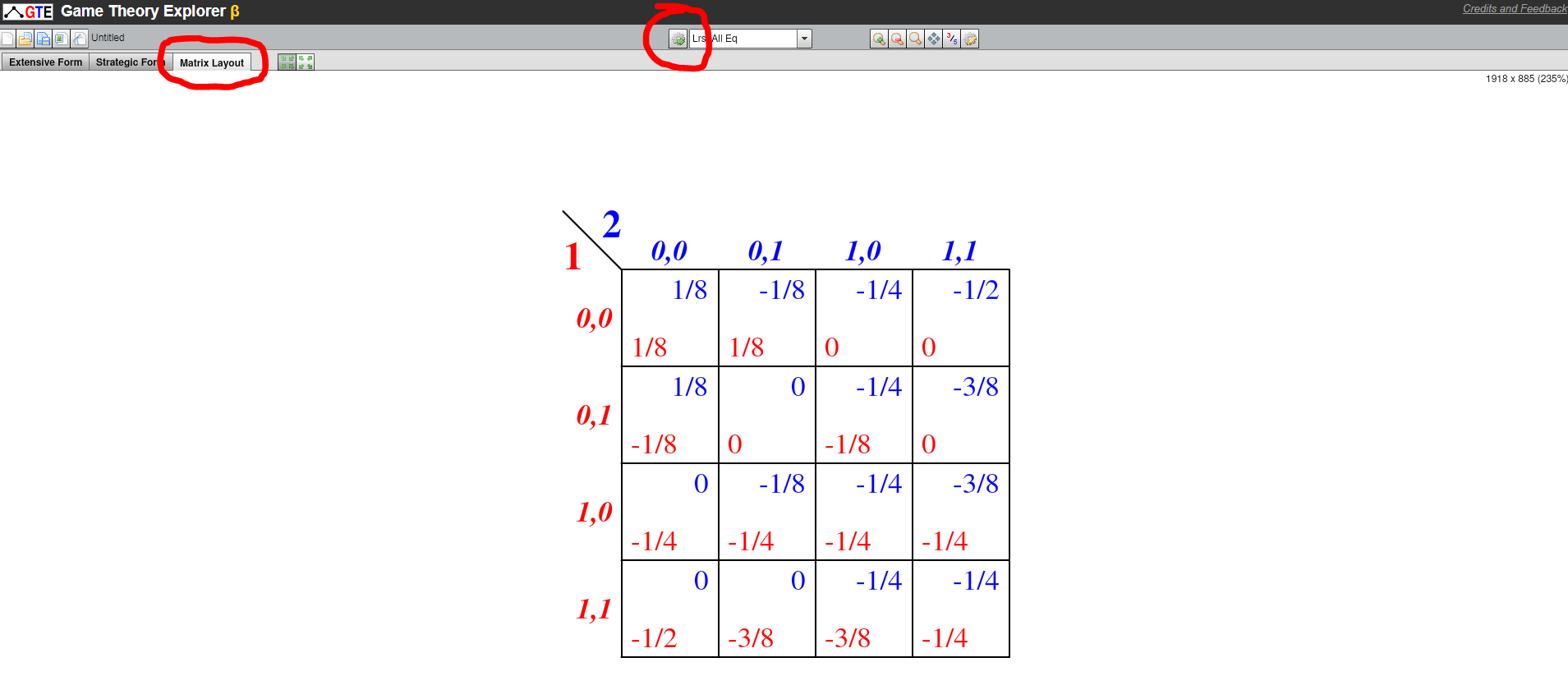I am trying to compute the (pure strategy) Nash equilibria of some discrete auctions.
More precisely, let us define the strategy of each player as a function mapping from every valuation that they might have to their bid (i.e. the 'bidding function'). Let us suppose that each player's valuation is drawn from some finite set and that their bid must belong to this same (finite) set. I am interested in finding the set of bidding functions, one for each player, such that each player's bidding function is optimal given the bidding functions of all the other players.
If it makes things easier, we can assume that valuations are symmetric (i.e. each player's valuation is generated by the same probability distribution) and that there are only two players. Ideally, however, we would proceed without these simplifications. I am interested in computing the equilibrium for the first price sealed bid and all pay auctions (in the latter, you pay your bid even if you lose; in the former, you don't.)
I have considered writing down the discrete auction game in normal form and finding the equilibria using software like Gambit. However, this would seem tricky since the strategy space is so large. For example, if a player chooses bids from $ \{1,...,10\} $ and draws values from $ \{1,...,10\} $, then already they have $10^{10}$ pure strategies.
Does anyone have any ideas about how to proceed here?


